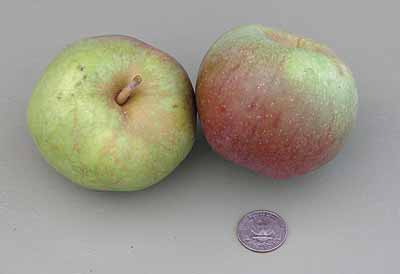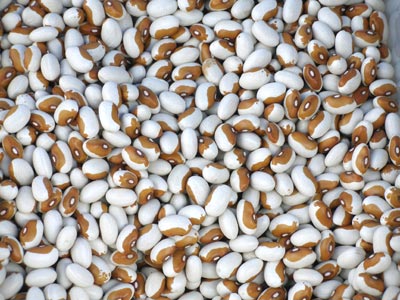
A name for Baldwin. A variety of mottled, medium to large, yellow eating apple streaked with dark red and crimson which was found by Mr John Ball on a farm in Lowell, Wilmington in Massachusetts some time around 1740. It was named Pecker or Woodpecker and then renamed in the early in the 1800s. It is a crisp apple with a slightly tart flavour and having a tough skin and yellowish-white flesh. It is a late-season apple, which is picked from mid-October in South-East England is stored and is at its best from December to April. In the United States it is picked in September in warm regions and until November in colder. Baldwin was an extremely popular apple until several million trees were killed off in the severe winter of 1918.
A hot, thick béchamel sauce with added egg yolks and lemon juice, cream and butter served with vegetables and boiled fish. It has a lot of extra butter whisked in.
Butterscotch is a type of toffee made from butter, brown sugar and water. To eat it is allowed to harden, but may also be used as a thick and gooey sauce. It is also used as a flavouring and sauce for desserts and confections.

A variety of bean which is white with a big light brown spot around the eye. They were the original beans used in Boston baked beans and the bean of choice for Hoppin' John in the South.
A fabricated cut of the beef primal chuck. It provides a reasonably tender steak.
A method of stewing foods in butter with the lid on, also known as sweating. This steams the food, softening it and flavouring it.
Monté au beurre. A method of thickening a sauce a little by swirling unsalted butter into it, a little at a time. It makes a visible spiral in the sauce as it melts. It is added at the last moment before serving to lend a sheen to the finished dish.
A sweet pastry shell with a filling made with butter, brown sugar and raisins and flavoured with vanilla.
Beef topside. A lean, boneless joint from the top of the long muscle which runs down the inside of the hind leg. Inclined to dryness, as has no marbling. It is better for braising and pot roasting than roasting. Ideally it should be carved and served after the joint has completely cooled. Sometimes fabricated into round steaks and Hugh Fearnley-Whittingstall uses it for making bresaola.